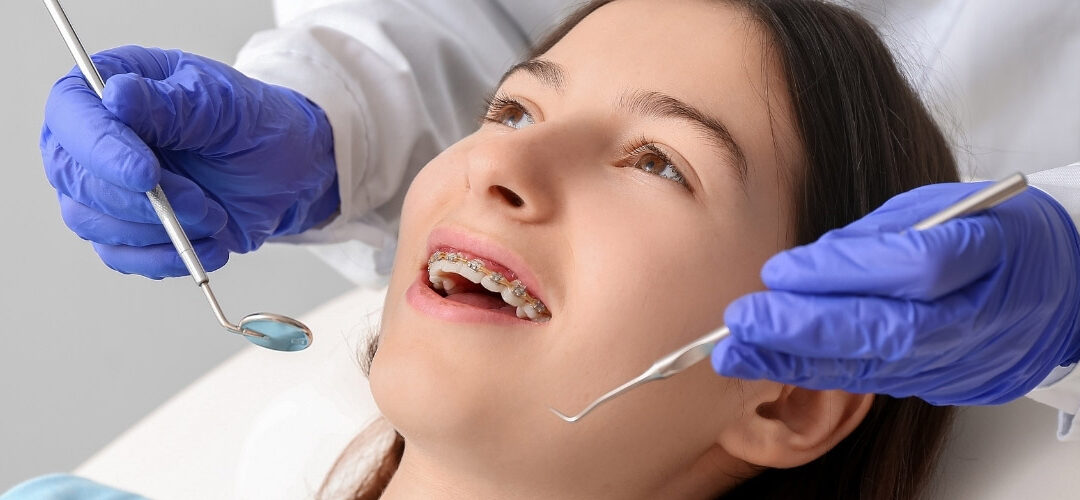Comprehensive Overview to Orthodontics Treatments for Correcting Dental Misalignments
Understanding the intricacies of each treatment, including their devices, advantages, and prospective disadvantages, is vital in making notified choices concerning one's orthodontic therapy. As we browse with the comprehensive guide to orthodontic treatments for correcting oral imbalances, the complex details of each approach will certainly unravel, dropping light on the path towards a unified and functional dental placement.
Orthodontic Procedures Introduction

Regular adjustments and tracking are vital components of orthodontic therapy to make certain progression is on track and to make any kind of necessary modifications along the way. By undergoing orthodontic procedures, patients can not only attain a straighter grin yet additionally boost their total dental wellness and feature.
Typical Braces: How They Work
When considering orthodontic therapies for oral imbalances, conventional dental braces stand out as a reliable method for dealing with teeth positioning. Conventional dental braces are composed of brackets, wires, and bands that work with each other to use continual pressure on the teeth, progressively relocating them into the preferred alignment.
One trick element of just how standard dental braces job is the procedure of bone renovation. As pressure is related to the teeth via the dental braces, the bone surrounding the teeth is reshaped to support the new tooth positions. This improvement is crucial for the long-term stability of the fixed positioning. Individuals will certainly require normal changes at the orthodontist's workplace to make certain the dental braces remain to use the proper stress for reliable teeth activity.
Unseen Aligners: Disadvantages and pros
These clear, personalized trays are practically invisible when put on, making them an attractive alternative for people looking for a much more aesthetically pleasing orthodontic therapy. Patients can get rid of the aligners before consuming or brushing their teeth, decreasing the danger of food getting stuck in the home appliance and streamlining the cleaning process.

Surgical Orthodontic Options
Surgical treatments in orthodontics existing sensible alternatives for resolving intricate oral imbalances that may not be efficiently dealt with through conventional orthodontic therapies. While traditional dental braces and undetectable aligners can correct many orthodontic concerns, specific situations require medical treatment to accomplish optimal outcomes. Surgical orthodontic alternatives are normally suggested for severe malocclusions, significant jaw disparities, and instances where the underlying bone framework needs modification to attain appropriate positioning.
One common medical orthodontic treatment is orthognathic surgery, which entails repositioning the jaws to correct useful concerns such as problem chewing or speaking. This surgery is often executed in collaboration with an orthodontist that assists straighten the teeth before and after the treatment. Surgical orthodontics may additionally include treatments to expose influenced teeth, remove excess periodontal tissue, or reshape the jawbone to develop a much more unified facial account.
Prior to thinking about medical orthodontic options, individuals undergo a thorough assessment to establish the necessity and possible benefits of such interventions. braces. While surgical treatment might seem complicated, it can considerably enhance both the feature and aesthetic appeals of the smile in instances where conventional orthodontic treatments drop short
Retainers and Post-Treatment Treatment

Post-treatment care involves following official website the orthodontist's directions faithfully. This might consist of proper oral hygiene practices, going to follow-up visits, and using the retainers as suggested. Failing to abide with post-treatment treatment instructions can result in relapse, where the teeth gradually return towards their original positions. Constant retainer wear, great oral hygiene, and routine dental check-ups are necessary for keeping the outcomes accomplished with orthodontic surgical procedure and making certain the lasting security of the remedied dental positioning.
Conclusion
To conclude, orthodontic treatments provide various alternatives permanent dentures for remedying dental imbalances. Standard braces make use of metal brackets and cables to shift teeth right into appropriate alignment. Unseen aligners supply a more very discreet alternative yet may not be ideal for all situations. Surgical orthodontic options are readily available for much more extreme imbalances. Retainers are typically made use of post-treatment to preserve the brand-new positioning. Overall, orthodontic treatments can effectively enhance dental health and wellness and aesthetic appearance.
As we navigate via the extensive overview to orthodontic treatments for correcting dental imbalances, the detailed details of each method will certainly unravel, losing light on the path toward a unified and useful dental placement. - cumming invisalign
One of the most common orthodontic treatments is the use of braces, which are composed of steel braces and cords that apply gentle pressure to gradually move teeth right into the wanted placement.When considering orthodontic treatments for dental misalignments, conventional braces stand out as a tried and true technique for remedying teeth placing. In addition, invisible aligners may not be appropriate for complicated orthodontic problems that helpful site call for even more substantial teeth activity, as they are commonly advised for light to modest instances. Retainers are personalized orthodontic tools made to hold teeth in their dealt with placements after the completion of orthodontic treatment.